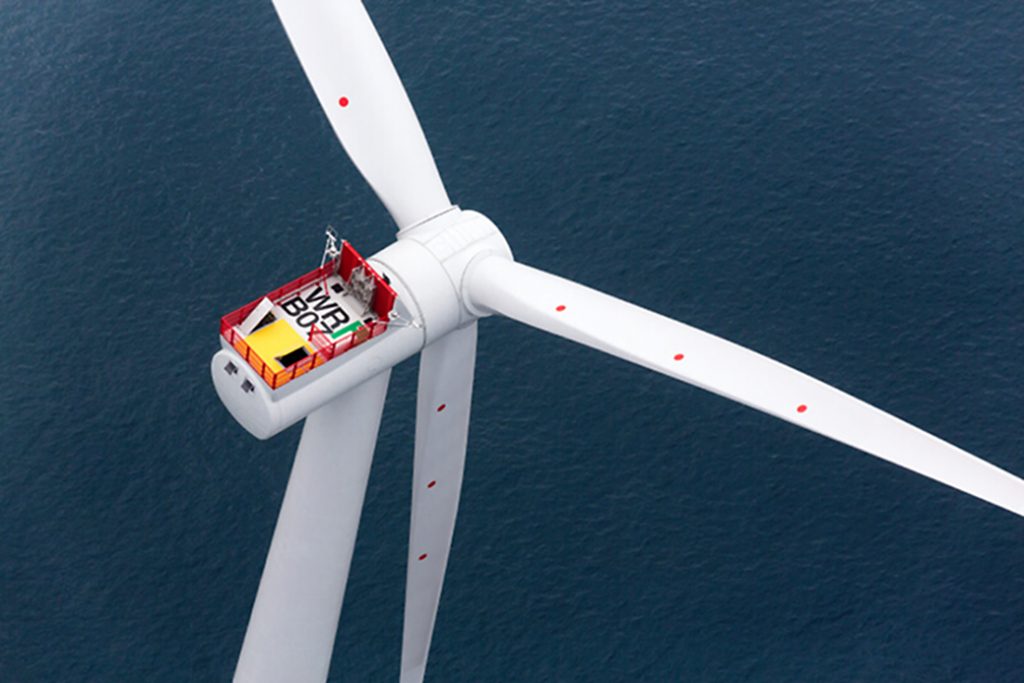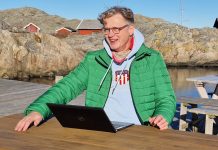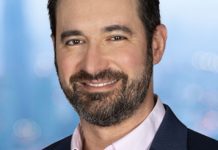The Business Network for Offshore Wind has gone through a recent rebranding campaign. What is the new name and the significance behind this new identity?
The new name is Oceantic Network. We wanted to make sure that we kept “network” in our name because we’re not moving away from the fact that this organization, since its inception, has been about bringing people together to establish the business relationships they need. Initially, it was the offshore wind supply chain, but now, with Oceantic, it is the ocean renewables supply chain. What we mean by ocean renewables are those sectors that are connected to offshore wind in some way, including green hydrogen produced from offshore wind, floating solar, wave, and tidal. What we’re seeing in Europe are hybrid wind parks, essentially, where they are combining technologies. They’re looking at the viability of floating solar, along with wave, and offshore wind to produce 100 percent sustainable energy.
This is great for a couple of reasons: One, it maximizes the ocean space and makes sure there is room for shipping and fishing. Then, there are also cost savings mechanisms. We can use a shared grid. We can use the same supply chain.
There are a lot of synergies by coming together under the brand of Oceantic Network. We want to bring the passion, commitment, and dedication that we’ve brought to offshore wind for the last decade to these other ocean renewables, because together we all know that we’re going to need a lot more energy by 2050. We felt like offshore wind was the tip of this spear, so to speak. We did a good job with offshore wind, and we’ve been an effective organization for the offshore wind industry and supply chain. Now, let’s bring along these other technologies that are nascent, as well.
Have you introduced your name to the offshore wind industry, and what’s been the reaction to that?
The reaction has been overwhelmingly positive. I have to be honest with you; I was a little concerned. We have some very dedicated members who have been with us for 10 years and just truly love us, and we love them. I was afraid they would think we were going to move away from offshore wind, but we have assured them we’re not. Offshore wind remains the cornerstone and the foundation of our organization; we’re just broadening our mission to reflect how the industry is evolving. Our members recognize this offers more opportunities and have been extremely positive about that.
I think it gave a renewed sense of excitement to the industry. When I see people talking on LinkedIn, it’s that renewed commitment to looking forward and pushing yourself. They see more opportunities and a way they can expand, which, of course, they see as a good thing.
Other wind-energy organizations have expanded in recent years: AWEA, which became the American Clean Power Association, and CanWEA, which has become CanREA. Did that factor into your reasons for the rebranding and the expansion?
It didn’t. All the technologies that we are now focused on are all complementary to one another. We’re looking at hybrid offshore wind parks. We’re not looking at, for example, advocating for floating solar completely on its own. There has to be an integration to offshore wind; that’s the difference. We’ve continued to keep a narrower focus than other organizations that include onshore, batteries, etc.
 Will this rebrand change how your organization interacts with the offshore wind sector?
Will this rebrand change how your organization interacts with the offshore wind sector?
No, we continue to advocate for U.S. market policies as well as educate, train and — most importantly – continue to connect people to build the offshore wind and other ocean renewables supply chain. What this means is we’ll now continue on a broader journey of educating our members about floating solar, wave and tidal, how it can be green hydrogen, how green hydrogen can be produced from offshore wind, how floating solar and wave and tidal can be combined with offshore wind to produce that 100-percent renewable power.
We’ll continue to help that supply chain evolve. Again, these are all the same. If you’re looking at wave or tidal, you’re looking at floating solar. It’s the same supply chain that’s going to supply offshore wind. It’s offshore construction. It’s going to be the same companies just with an expanded scope.
A good example of that is IPF (International Partnering Forum), coming up in April in New Orleans. It shows how we see the industry growing. We’re still committed to IPF. We’re growing it each year. It grows and grows. It will be mostly focused on offshore wind, but we’re going to add a Floating Summit (FloatOn) in 2024. There’s also going to be a track that focuses on power-to-X, which will bring in those other ocean renewables that reflect where the market is currently.
Speaking of the supply chain, how will becoming the Oceantic Network help build the offshore supply chain?
It will allow new entrants into the sector — maybe people that we haven’t worked with before. It will help build it out and make it a deeper supply chain. It’s no secret offshore wind, right now, is going through some headwinds, and there are some cost factors that we’re seeing. But I’m hopeful that, by combining these technologies together into hybrid parks, it will help reduce costs. It will also provide a better energy profile that helps increase revenue for the developers. This will allow projects to be planned a little bit differently than they had before. It’s not a solution that we’re going to see anytime soon in the U.S., but it is something I hope to see in the next five to seven years.
You talked about the International Partnering Forum. How will this affect that going forward?
We host somewhere between 72 and 79 workshops at IPF. A portion of those will be dedicated to these ocean renewable technologies. We already had a track with green hydrogen, power-to-X, but we’ll be looking at having more educational opportunities at the IPF to explain the other ocean renewables to the industry as we move forward and to hear the lessons learned from Europe. Europe is already doing pilots, with one in Portugal and one in the Netherlands. Learning from those lessons early — much earlier than we did with offshore wind — is going to be extremely beneficial to the industry overall. IPF will be the vehicle where we deliver that information.
How do you see the rebranding being a positive force to the future of offshore wind?
It creates excitement; it generates new life. I really think it creates so many more opportunities for our members. This is a positive force for offshore wind, and it shows offshore wind isn’t sitting out there in isolation anymore. It is now combined — or could be combined — with other technologies that help maximize the ocean base, cut costs, and employ the supply chain in new and additional ways. It’s really beneficial, overall, for the industry. That’s the feedback we’ve been getting.
Is there anything else you’d like to mention that we didn’t talk about?
It’s important to note that this was our 10-year anniversary, so we were thinking, “What’s going to happen for the next 10 years?” It became very clear that it was time to start expanding. As we’re closing the 10-year celebration anniversary, it’s exciting to be able to announce this new name and the expanded mission.
More info oceantic.org






























